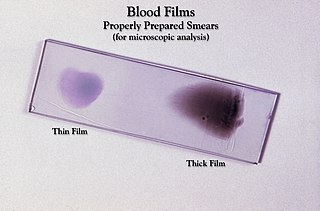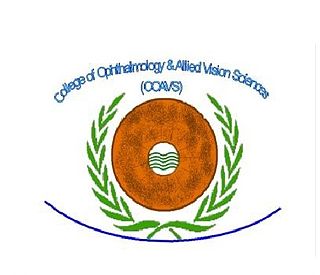
Pathology is the study of the causes and effects of disease or injury. The word pathology also refers to the study of disease in general, incorporating a wide range of bioscience research fields and medical practices. However, when used in the context of modern medical treatment, the term is often used in a more narrow fashion to refer to processes and tests which fall within the contemporary medical field of "general pathology," an area which includes a number of distinct but inter-related medical specialties that diagnose disease, mostly through analysis of tissue, cell, and body fluid samples. Idiomatically, "a pathology" may also refer to the predicted or actual progression of particular diseases, and the affix path is sometimes used to indicate a state of disease in cases of both physical ailment and psychological conditions. A physician practicing pathology is called a pathologist.

Anatomical pathology (Commonwealth) or Anatomic pathology (U.S.) is a medical specialty that is concerned with the diagnosis of disease based on the macroscopic, microscopic, biochemical, immunologic and molecular examination of organs and tissues. Over the last century, surgical pathology has evolved tremendously: from historical examination of whole bodies (autopsy) to a more modernized practice, centered on the diagnosis and prognosis of cancer to guide treatment decision-making in oncology. Its modern founder was the Italian scientist Giovan Battista Morgagni from Forlì.

The genitourinary system or urogenital system is the organ system of the reproductive organs and the urinary system. These are grouped together because of their proximity to each other, their common embryological origin and the use of common pathways, like the male urethra. Also, because of their proximity, the systems are sometimes imaged together.
Dermatopathology is a joint subspecialty of dermatology and pathology or surgical pathology that focuses on the study of cutaneous diseases at a microscopic and molecular level. It also encompasses analyses of the potential causes of skin diseases at a basic level. Dermatopathologists work in close association with clinical dermatologists, with many possessing further clinical training in dermatology.

Clinical pathology, Laboratory Medicine, Clinical analysis (Spain) or Clinical/Medical Biology, is a medical specialty that is concerned with the diagnosis of disease based on the laboratory analysis of bodily fluids, such as blood, urine, and tissue homogenates or extracts using the tools of chemistry, microbiology, hematology and molecular pathology. This specialty requires a medical residency.
Hematopathology or hemopathology is the study of diseases and disorders affecting blood cells, their production, and any organs and tissues involved in hematopoiesis, such as bone marrow, the spleen, and the thymus. Diagnoses and treatment of diseases such as leukemia and lymphoma often deal with hematopathology; techniques and technologies include flow cytometry studies and immunohistochemistry.
Orthopedic pathology, also known as bone pathology is a subspecialty of surgical pathology which deals with the diagnosis and feature of many bone diseases. It uses gross and microscopic findings along with the findings of in vivo radiological studies, and occasionally, specimen radiographs to diagnose diseases of the bones.
Soft tissue pathology is the subspecialty of surgical pathology which deals with the diagnosis and characterization of neoplastic and non-neoplastic diseases of the soft tissues, such as muscle, adipose tissue, tendons, fascia, and connective tissues. Many malignancies of the soft tissues are challenging for the pathologist to diagnose through gross examination and microscopy alone, and additional tools such as immunohistochemistry, electron microscopy, and molecular pathology techniques are sometimes employed to obtain a definitive diagnosis.
Pulmonary pathology is the subspecialty of surgical pathology which deals with the diagnosis and characterization of neoplastic and non-neoplastic diseases of the lungs and thoracic pleura. Diagnostic specimens are often obtained via bronchoscopic transbronchial biopsy, CT-guided percutaneous biopsy, or video-assisted thoracic surgery (VATS). The diagnosis of inflammatory or fibrotic diseases of the lungs is considered by many pathologists to be particularly challenging.
Endocrine pathology is the subspecialty of surgical pathology which deals with the diagnosis and characterization of neoplastic and non-neoplastic diseases of organs of the endocrine system, including the thyroid, parathyroids, pituitary, endocrine pancreas, and adrenal glands.
Gastrointestinal pathology is the subspecialty of surgical pathology which deals with the diagnosis and characterization of neoplastic and non-neoplastic diseases of the digestive tract and accessory organs, such as the pancreas and liver.
A subspecialty or subspeciality is a narrow field within a specialty such as forensic pathology, which is a subspecialty of anatomical pathology. A subspecialist is a specialist of a subspecialty.
Master of Medicine (MMed) is a postgraduate academic degree awarded by medical schools to physicians following a period of instruction and examination. The degree is awarded by both surgical and medical subspecialties and usually includes a dissertation component involving original research. The degree may complement an existing fellowship in the chosen specialty or be the sole qualification necessary for registration as a specialist.
Sclerosing polycystic adenosis is a rare, reactive inflammatory condition of the salivary glands. It may be mistaken for salivary gland neoplasia. It does not seem to be a fatal disease.
Salivary gland hyperplasia is hyperplasia of the terminal duct of salivary glands.

College of Ophthalmology and Allied Vision Sciences (COAVS) formerly known as Punjab institute of Preventive Ophthalmology (PIPO) is one of the finest Ophthalmic Institute in Pakistan. it is attached with Mayo Hospital which was built in 1872 and was named after Lord Mack Mayo and King Edward Medical University which was built in 1860 and was named after King Edward.
Lorenz Eugene Zimmerman was an American ophthalmologist and an ophthalmic pathologist.
The American Board of Pathology (ABPath) is one of 24 member boards of the American Board of Medical Specialties. This organization was assembled in May 1936, under the approval of the Advisory board for Medical Specialties (ABMS) and the American Medical Association (AMA) Council on Medical Education and Hospitals. It is the duty of the ABPath to grant certification in Anatomic Pathology, Clinical Pathology and/or Anatomic/Neuropathology to qualified Doctors of Medicine (M.D.).






